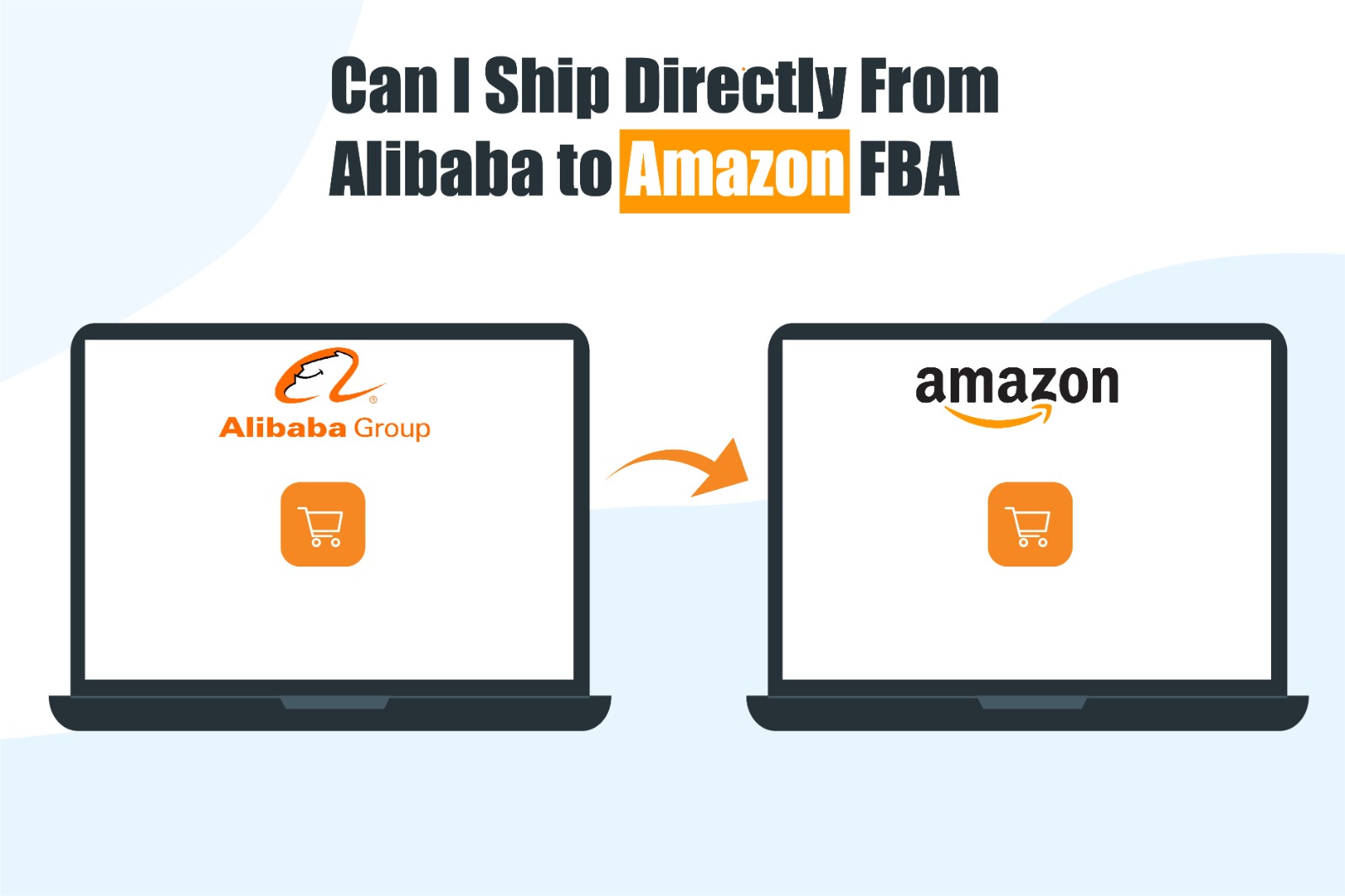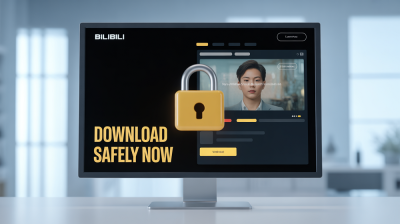Alibaba, often hailed as the world's largest online B2B marketplace, serves as a comprehensive platform connecting buyers and sellers globally. Navigating this expansive marketplace is a key step in ensuring the success of your shipping endeavors from
Alibaba to Amazon warehouses.Here's a detailed exploration to help you grasp the nuances of the
Alibaba platform:
The Basics
Alibaba operates as a one-stop-shop for a wide array of products, from electronics to textiles. Suppliers, ranging from manufacturers to wholesalers, showcase their offerings, providing a vast selection for potential buyers. To begin, create an account on
Alibaba, and you'll gain access to a world of possibilities.
Product Search and Filtering
Efficiently finding the right products is paramount. Utilize
Alibaba's robust search and filtering options to narrow down your choices. Filter by product category, minimum order quantity, and shipping terms to pinpoint products that align with your business needs.
Supplier Verification
Before entering into transactions, prioritize suppliers with a Gold Supplier status. This designation indicates that the supplier has undergone a comprehensive verification process by
Alibaba, instilling confidence in their reliability. Additionally, check customer reviews and ratings for further assurance.
Communication and Negotiation
Effective communication is the key to successful transactions. Use
Alibaba's messaging system to converse with suppliers. Clearly articulate your requirements and negotiate terms such as pricing, shipping, and payment. Establishing a transparent and open line of communication lays the foundation for a successful partnership.
Transaction Security
Alibaba provides a secure platform for transactions through its Trade Assurance program. This service safeguards your payments until you confirm the receipt and satisfaction of the products. Familiarize yourself with the terms of this program to ensure a secure transaction process.
Order Placement and Payment
Once negotiations are complete, proceed to place your order directly on
Alibaba. Prioritize secure payment methods, such as
Alibaba's Secure Payment service or PayPal, to add an extra layer of protection to your financial transactions.Understanding these fundamental aspects of the
Alibaba platform sets the stage for a successful journey from product discovery to initiating secure transactions with reliable suppliers. In the next sections, we'll delve deeper into strategies for finding the right products and ensuring a smooth negotiation process.
Finding the Right Products
Embarking on a successful shipping journey from
Alibaba to Amazon warehouses begins with finding the right products. Here's a comprehensive guide to help you navigate
Alibaba's vast marketplace and make informed choices:
Product Categories and Specializations
Alibaba features a diverse range of product categories. Identify your niche or target market, and use the category filters to streamline your search. Whether you're sourcing electronics, apparel, or home goods,
Alibaba offers an extensive selection to cater to various business needs.
Search Filters and Parameters
Optimize your search by utilizing
Alibaba's powerful filters and parameters. Specify criteria such as minimum order quantity, product specifications, and price range to narrow down options that align with your business requirements. This targeted approach saves time and ensures you find products that meet your standards.
Verified and Gold Suppliers
Prioritize suppliers with a Gold Supplier status and verification badges. This indicates a higher level of reliability and professionalism. Gold Suppliers undergo a thorough verification process by Alibaba, instilling confidence in the authenticity of their products and the reliability of their services.
Product Samples and Quality Assessment
Before making bulk purchases, consider ordering product samples. This allows you to assess the quality firsthand and verify if the products meet your standards. Inspect the samples for durability, functionality, and overall quality to ensure customer satisfaction upon receiving the final shipments.
Minimum Order Quantities (MOQs)
Take note of the supplier's Minimum Order Quantity (MOQ) requirements. Evaluate whether the MOQ aligns with your business scale and budget. Some suppliers offer flexible MOQs, while others may require larger quantities for specific products. Negotiate with suppliers to find a balance that suits your needs.
Shipping Terms and Costs
Understand the shipping terms and costs associated with each product. Evaluate shipping options, delivery times, and associated fees. Factor these considerations into your overall cost analysis to make informed decisions and avoid unexpected expenses during the shipping process.
Comparison Table
| Product | Supplier | Price | MOQ | Shipping Cost |
|---|
| Product A | Supplier 1 | $X.XX | 100 units | $XX.XX |
| Product B | Supplier 2 | $XX.XX | 200 units | $XXX.XX |
Creating a comparison table like the one above can assist in visually evaluating different product options, allowing you to make an informed decision based on key factors such as price, MOQ, and shipping costs.By following these steps and considering various factors, you can confidently navigate Alibaba's marketplace and find the right products for your Amazon shipments. The next section will delve into the crucial aspects of negotiating and communicating effectively with suppliers for successful transactions.
Negotiating and Communicating with Suppliers
Effective communication and negotiation with suppliers are integral components of a successful shipping process from Alibaba to Amazon warehouses. Here's a detailed guide on navigating this crucial aspect of your business:
Clear and Concise Communication
Initiate communication with suppliers through Alibaba's messaging system. Clearly articulate your requirements, expectations, and any specific details relevant to the transaction. Providing comprehensive information sets the stage for a transparent and productive partnership.
Negotiation Strategies
Mastering negotiation is key to securing favorable terms. Research market prices, understand the supplier's cost structure, and be prepared to negotiate on various aspects such as pricing, MOQ, and shipping terms. Finding a mutually beneficial arrangement contributes to a successful long-term relationship.
Bulk Order Discounts
Many suppliers are open to offering discounts for bulk orders. Inquire about volume discounts based on the quantity you intend to purchase. Negotiating favorable terms for larger quantities can significantly impact your overall costs and profitability.
Payment Terms
Discuss and finalize payment terms with your supplier. Be clear about the preferred payment method, whether it's through Alibaba's Secure Payment system, PayPal, or other agreed-upon methods. Ensure that the payment terms align with your business's financial capabilities and risk tolerance.
Timeline and Production Schedule
Establish a clear timeline for production and shipment. Communicate your desired delivery schedule and confirm the supplier's production and shipping timelines. Having a well-defined schedule helps avoid delays and ensures timely delivery of products to your Amazon warehouse.
Written Agreements
Formalize agreements in writing to avoid misunderstandings. Create a detailed contract or purchase agreement that outlines all negotiated terms, including product specifications, pricing, payment terms, and delivery schedules. Both parties should review and sign the agreement before proceeding with the transaction.
Communication Tips
- Respond promptly to supplier inquiries and messages.
- Ask clarifying questions to ensure a complete understanding of terms.
- Express appreciation for cooperation and a willingness to establish a long-term partnership.
Communication and Negotiation Log
| Date | Communication Summary | Negotiation Outcome |
|---|
| MM/DD/YYYY | Initiated communication with Supplier X regarding Product A. | Agreed on pricing and MOQ after negotiation. |
| MM/DD/YYYY | Discussed production schedule and delivery timelines with Supplier Y. | Confirmed production start date and estimated delivery window. |
Keeping a communication and negotiation log can help you track discussions, agreements, and outcomes, providing a reference for future interactions with suppliers.By implementing effective communication and negotiation strategies, you can build strong relationships with suppliers, ensuring smooth transactions and a successful shipping journey from Alibaba to Amazon warehouses. The next section will focus on quality assurance and product inspection to guarantee the excellence of your sourced products.
Quality Assurance and Product Inspection
Ensuring the quality of products sourced from Alibaba is paramount for a successful venture. Implementing robust quality assurance and product inspection processes safeguards against defects and maintains the standard of your offerings. Here's a detailed guide on how to incorporate quality assurance into your shipping journey:
Pre-shipment Inspection
Consider implementing pre-shipment inspections to assess the quality of products before they leave the supplier's facility. Hire a reputable third-party inspection service or conduct inspections yourself to verify that the products meet your specifications and quality standards.
Checklist for Inspection
Create a comprehensive checklist for product inspection. Include key elements such as:
- Product specifications (size, color, materials)
- Packaging integrity
- Functionality and performance tests
- Compliance with safety standards
Use this checklist as a guide during inspections to ensure a thorough evaluation of each product.
Defect Tolerance and Acceptance Criteria
Establish clear defect tolerance levels and acceptance criteria in collaboration with your suppliers. Define acceptable and unacceptable levels of defects for each product category. This clarity sets expectations and avoids disputes regarding product quality.
Communication with Suppliers
Maintain open communication with suppliers regarding quality expectations. Clearly communicate your quality standards, specifications, and any specific requirements for packaging and labeling. Establishing a shared understanding of quality parameters is crucial for successful cooperation.
Random Sampling Technique
Implement a random sampling technique during inspections. Randomly select a predetermined number of units from each batch for detailed inspection. This approach ensures a representative assessment of the entire shipment and reduces the likelihood of biased inspections.
Documentation and Reporting
Document the results of inspections thoroughly. Create detailed reports that include photographs, descriptions of any defects found, and overall product assessments. Share these reports with suppliers to address any issues and facilitate corrective actions if necessary.
Quality Assurance Timeline
| Phase | Activity | Timeline |
|---|
| Pre-production | Supplier collaboration on quality standards | Before production starts |
| During production | Random sampling inspections | At various stages of production |
| Pre-shipment | Final product inspection | Before products leave the supplier's facility |
Adhering to a structured quality assurance timeline helps integrate quality control seamlessly into the production process, reducing the risk of defects reaching the Amazon warehouse.By incorporating these quality assurance and inspection practices into your sourcing strategy, you enhance the reliability and satisfaction of your customers. The next section will delve into Alibaba shipping options, helping you choose the most suitable method for your business needs.
Alibaba Shipping Options
Choosing the right shipping method is a critical step in the journey from Alibaba to Amazon warehouses. Understanding Alibaba's shipping options empowers you to make informed decisions based on your business requirements and timelines. Let's explore the key shipping options available:
Express Shipping
For smaller and urgent shipments, express shipping services such as DHL, FedEx, and UPS are popular choices. These services offer fast and reliable delivery, ensuring that your products reach the Amazon warehouse in a timely manner. While express shipping tends to be more expensive, it provides expedited transit times, making it suitable for time-sensitive inventory needs.
Sea Freight
Sea freight is a cost-effective option for larger shipments. Shipping containers by sea allow for the transportation of bulk quantities at a lower cost per unit. While sea freight has a longer transit time compared to express shipping, careful planning and coordination with suppliers can help manage inventory levels effectively. This option is ideal for businesses with larger quantities of stock and a more flexible timeline for product arrival.
Air Freight
Air freight strikes a balance between the speed of express shipping and the cost-effectiveness of sea freight. Shipping products by air is faster than sea freight and more economical than express services. Air freight is a suitable option for mid-sized shipments that require a quicker transit time without the premium cost associated with express shipping.
Combined Shipping
Some suppliers offer the option of combined shipping, allowing you to optimize costs by consolidating multiple orders into a single shipment. This can be particularly advantageous if you source products from various suppliers. Coordinating with suppliers and exploring combined shipping options can contribute to overall cost savings and efficient inventory management.
Shipping Cost Analysis
When evaluating shipping options, conduct a thorough cost analysis that includes factors such as:
- Shipping method and associated costs
- Customs duties and taxes
- Handling fees
- Insurance costs
Comparing these elements across different shipping methods will help you make informed decisions aligned with your budget and business strategy.
Shipping Decision Matrix
| Criteria | Express Shipping | Sea Freight | Air Freight |
|---|
| Transit Time | Short | Long | Medium |
| Cost | High | Low | Moderate |
| Suitability | Small and urgent shipments | Large shipments with flexible timelines | Mid-sized shipments with moderate urgency |
Using a decision matrix like the one above can assist you in visually comparing shipping options based on key criteria, facilitating a more straightforward decision-making process.By weighing the advantages and limitations of each shipping option, you can tailor your approach to match the specific needs of your business. The next section will delve into the crucial topic of customs and regulatory compliance, ensuring a smooth transition of your products through the regulatory landscape.
Customs and Regulatory Compliance
Navigating customs and ensuring regulatory compliance is a crucial aspect of the shipping process from Alibaba to Amazon warehouses. Understanding the intricacies of customs procedures and adhering to regulatory requirements is essential to avoid delays and complications. Here's a comprehensive guide to help you navigate customs and regulatory compliance:
Research and Familiarization
Prior to shipping, conduct thorough research on the customs regulations of the destination country, in this case, the Amazon warehouse location. Familiarize yourself with import restrictions, duties, and taxes applicable to your products. This knowledge forms the foundation for a smooth customs clearance process.
Harmonized System (HS) Codes
Assign the correct Harmonized System (HS) codes to your products. HS codes are internationally recognized codes that classify products for customs purposes. Ensure accuracy in code assignment, as it determines the applicable customs duties and taxes. Consult with customs experts if needed to avoid misclassifications.
Documentation Checklist
Compile a comprehensive documentation checklist to streamline the customs clearance process. Required documents may include:
- Commercial invoice
- Packing list
- Bill of lading or airway bill
- Certificates of origin
- Import permits or licenses (if applicable)
Providing accurate and complete documentation reduces the likelihood of customs delays.
Customs Brokerage Services
Consider engaging the services of a customs broker to facilitate the clearance of your goods. Customs brokers are experts in navigating customs procedures and can help ensure compliance with regulations. Their expertise can be particularly valuable when dealing with complex customs requirements.
Incoterms
Choose appropriate Incoterms (International Commercial Terms) when negotiating with suppliers. Incoterms define the responsibilities and costs of buyers and sellers in international transactions. Clearly stipulate the chosen Incoterms in your agreements to avoid misunderstandings regarding who is responsible for shipping, insurance, and customs clearance costs.
Customs Duties and Taxes Analysis
Conduct a thorough analysis of the potential customs duties and taxes applicable to your products. Factor these costs into your overall budget and pricing strategy. Understanding the financial implications of customs duties and taxes is essential for accurate cost projections and maintaining profitability.
Customs Compliance Checklist
| Task | Completion Status |
|---|
| HS code assignment | Complete |
| Documentation preparation | In progress |
| Customs broker engagement | Not started |
Using a checklist like the one above can help you track and manage various tasks related to customs compliance, ensuring a systematic approach to the process.By proactively addressing customs and regulatory requirements, you pave the way for a seamless shipping experience. The next section will address common questions in the FAQ, providing additional insights for a successful Alibaba to Amazon warehouse shipping journey.
FAQ
Explore answers to common questions about shipping from Alibaba to Amazon warehouses to enhance your understanding of the process:
Q: What is the recommended shipping method for small and urgent shipments?
A: Express shipping services, such as DHL, FedEx, and UPS, are ideal for small and urgent shipments. While they may be more expensive, they offer fast and reliable delivery.
Q: How can I ensure the quality of products sourced from Alibaba?
A: Implement thorough quality assurance practices, including pre-shipment inspections, clear communication of quality standards to suppliers, and the establishment of defect tolerance levels. Consider hiring third-party inspection services for added assurance.
Q: What documentation is essential for customs clearance?
A: Essential documentation includes a commercial invoice, packing list, bill of lading or airway bill, certificates of origin, and any required import permits or licenses. Ensuring accurate and complete documentation is crucial for smooth customs clearance.
Q: Should I engage a customs broker for my shipments?
A: Engaging a customs broker is recommended, especially for shipments with complex customs requirements. Customs brokers have expertise in navigating customs procedures and can help ensure compliance with regulations, facilitating a smoother clearance process.
Q: How do I choose the right Incoterms for my transactions?
A: Choose Incoterms that align with your business goals and risk tolerance. Clearly stipulate the chosen Incoterms in your agreements with suppliers to avoid misunderstandings. Common options include FOB (Free On Board) and CIF (Cost, Insurance, and Freight).
Q: What is the significance of HS codes in customs clearance?
A: Harmonized System (HS) codes are internationally recognized codes that classify products for customs purposes. Assigning the correct HS codes is essential for determining applicable customs duties and taxes, avoiding misclassifications and potential delays.
Q: Can I consolidate shipments from multiple suppliers for cost savings?
A: Yes, many suppliers offer combined shipping options, allowing you to consolidate multiple orders into a single shipment. Coordinating with suppliers and exploring combined shipping can contribute to overall cost savings and efficient inventory management.
Q: What factors should I consider when analyzing shipping costs?
A: Consider shipping method and associated costs, customs duties and taxes, handling fees, and insurance costs. Conduct a comprehensive analysis to compare these factors across different shipping methods, aiding in informed decision-making aligned with your budget and business strategy.These frequently asked questions provide valuable insights into key aspects of the Alibaba to Amazon warehouse shipping process. For more detailed information, continue exploring the sections above or seek additional resources for a comprehensive understanding of the shipping journey.
Conclusion
Embarking on the journey of shipping from Alibaba to Amazon warehouses involves a series of strategic steps and considerations. In this comprehensive guide, we've navigated through essential aspects, providing insights and practical tips to ensure a successful shipping experience. Let's recap the key takeaways:
1. Product Discovery and Supplier Interaction
Thoroughly explore the Alibaba platform, utilizing search filters and engaging with verified suppliers. Establish clear communication channels, negotiate effectively, and prioritize suppliers with Gold Supplier status for increased reliability.
2. Quality Assurance and Inspection
Implement stringent quality assurance practices, including pre-shipment inspections and clear communication of quality standards. Utilize checklists and documentation to ensure that your products meet specified criteria and adhere to the highest quality standards.
3. Shipping Options and Cost Analysis
Choose the right shipping method based on your business needs, whether it's express shipping for small and urgent shipments or sea freight for larger quantities. Conduct a thorough cost analysis considering shipping method, customs duties, and other associated costs to optimize your budget.
4. Customs and Regulatory Compliance
Understand customs regulations, assign accurate HS codes, and compile essential documentation for smooth customs clearance. Engage customs broker services when needed, and choose appropriate Incoterms to clarify responsibilities and costs in international transactions.
5. Frequently Asked Questions and Additional Insights
Explore common questions related to Alibaba to Amazon warehouse shipping, covering topics from product quality to customs procedures. This FAQ section provides additional insights to enhance your understanding of the entire shipping process.By following these guidelines, you can navigate the complexities of the shipping process, minimize risks, and establish a reliable supply chain from Alibaba to Amazon warehouses. Remember to stay informed, communicate effectively with suppliers, and adapt your strategy based on the specific needs of your business. Wishing you a smooth and prosperous shipping journey!

 admin
admin








